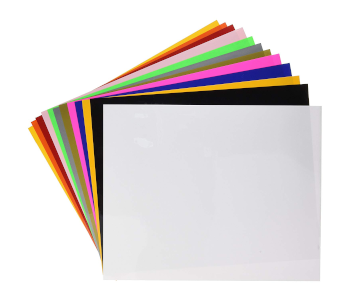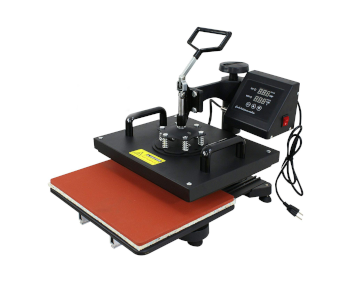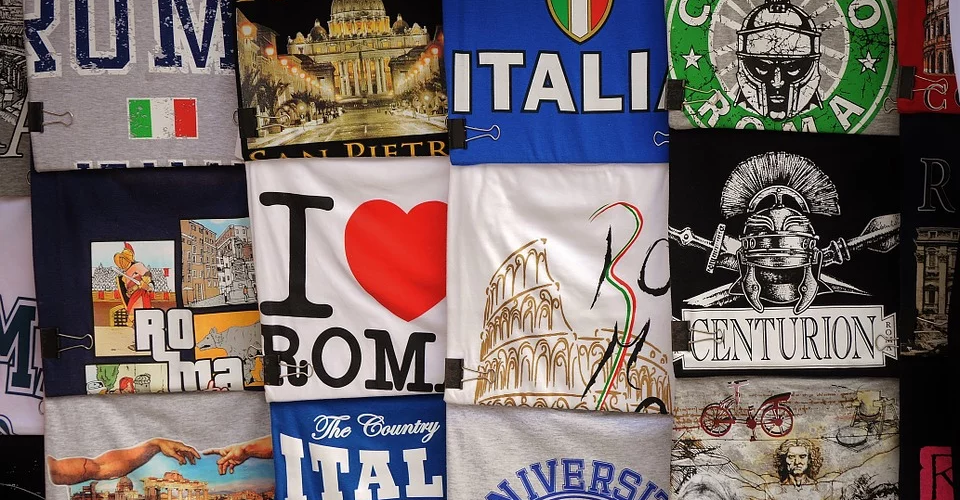Plastisol Transfer – What It Is, How It Works, Pros and Cons
Printing T-shirts is one of the oldest businesses that you can run right out of your home. It’s a business with fairly simple products and a sustainable market that lets you flex your artistic muscles. It also typically doesn’t require huge capital, making it an attractive avenue for first-time entrepreneurs.
Traditionally, the most reliable and cheapest way to mass-produce a huge number of T-shirts with a customized design was through screen printing. However, heat transfer methods such as plastisol transfer have been gaining popularity in the last couple of years. What exactly is plastisol transfer and what are its advantages over screen printing?
What is plastisol transfer?

Plastisol transfer is a heat transfer method for printing designs on T-shirts that uses a specialized transfer paper. This is different from the transfer paper method that uses inkjet printers to print designs on another type of heat transfer paper. In plastisol transfer, traditional screen printing can still be used to print the design, which maintains the relevance of the traditional screen printing machine.
When preparing the transfer paper for plastisol transfer, the ink is allowed to partially cure on the paper so that it stays printed on even after a long time in storage. When the T-shirt needs to be made, the paper is laid face-down on the shirt and heat-pressed, allowing the ink to transfer into the shirt and fully sure.
Plastisol transfer is considered the middle ground between traditional screen printing methods and the inkjet-based transfer paper method. It retains the more visually appealing look and better washability of a screen printed design with the convenience and versatility of heat transfer.
If you are currently running a T-shirt business selling screen printed designs, you can ask your existing supplier if they are also capable of printing designs for plastisol transfer. Printing on transfer paper for plastisol uses essentially the same equipment, although the printing techniques may have to be tweaked to account for the different substrate.
How does plastisol transfer work?

If you are going to run a business selling T-shirts, the plastisol transfer method starts with you ordering a batch of printed designs from your supplier. The output should arrive in the form of sheets of plastisol transfer paper printed with your desired design.
Several iterations of the design may be printed on a single sheet and cut out as needed. These are called ‘gang sheets’ and are a great way to save on the costs of printing and the substrate.
To run a successful plastisol transfer business, you will need to make an investment for a heat transfer press. This is the same machine used for heat transfer T-shirt printing method is basically composed of a hot plate with controllable temperature and opposing plate that can be pressed down to provide pressure.
When it’s time to start printing, simply lay down the shirt on the heat transfer press and place the plastisol transfer paper on top of the desired location, printed side down. The upside-down orientation means that you will need the mirror image of your designs to be printed on the transfer paper, as they will be reversed again when they get transferred on the shirt.
At this point, you have two choices: you can do a hot-split or a cold transfer. The cold transfer method is more straightforward. Simply press down on the heat transfer press for about 12 seconds, lift it up, and allow the ink to cool down for about a minute. This should transfer the design completely to the shirt without leaving any residual on the transfer paper.
The hot-split method starts out the same way by pressing down on the heat transfer press for enough time to fully cure the ink. However, you will have to peel off the transfer paper immediately after you lift the press. This will result in an incomplete transfer of the design from the paper to the shirt. This creates a nice non-uniform effect that makes the shirt look hand-made and unique.
You can also leave the transfer paper on for a few additional seconds if you feel like you would want a higher percentage of ink transfer. This is a technique that you can practice on and tweak so that you can develop your own signature look.
Pros and cons of plastisol transfer
In evaluating the pros and cons of the plastisol transfer method, it has to be done in the context of other T-shirt printing methods: screen printing and transfer printing. Most businesses that sell screen printed shirts outsource the printing process, simply providing the designs to a third-party company who does the screen printing for them. They then receive the orders in the form of printed shirts, often subject to a minimum order.
PROS
1. Suitable for small orders
The business model for a plastisol-based T-shirt printing business is simply better suited for handling smaller orders. You can order the printed plastisol sheets from a screen printing company, keep a stock of blank shirts, and just transfer the designs when the orders come in. You can even set up a shirt printing booth in an event and have custom printed shirts for customers in just a few minutes. There is no minimum order, and you don’t stand to lose a lot of money if a particular design doesn’t sell as well as you had hoped.
2. Less messy process
While most T-shirt businesses outsource the screen printing process, there are also those who have tried doing screen printing themselves. Those who have done this will know how incredibly messy it can get. Paint can and will get everywhere, and cleanup can take up a lot of time.
By making the switch to plastisol transfer, all you’re going to need in your workspace is the heat transfer press and your sheets of printed plastisol transfer paper There are no open cans of paint, squeegees, and brushes to worry about. In this method, all you need to be concerned with is coming up with good designs.
3. Better design flexibility
In screen printing, you often need to hold yourself back during the design process so that the design doesn’t get too complex. A complex design is difficult to replicate using screen printing and may have effects on the cost and turnaround time for the service. This is not as much of an issue with plastisol transfer, as adding layers of different existing to a printed shirt design is just a matter of running it under the heat transfer press several times, which is a relatively simple process.
4. More durable and better washability than transfer printing
Transfer printing using an inkjet printer works by printing the design on a transfer paper which is then laid down directly on the shirt and heat pressed. Although this is easy to do, design made by transfer printing tends to have poor washability and quickly deteriorate after getting washed several times.
By using the same ink used in screen printing, plastisol transfer retains its more classic appearance and superior washability. Designs made from plastisol transfer will last longer without fading or cracking.
CONS
1. Requires investment for the heat transfer press
The major investment you’ll need to make when making the switch to plastisol transfer is for the heat transfer press. Fortunately, you can get one for just about $300. If you have the budget, you can opt for larger-sized versions that can cost up to $2000.
2. Not all screen printing services may offer plastisol transfer
If you’re hiring a third-party company to screen print your shirts, it may be possible to retain the services of that company and have them print your design on plastisol transfer paper. However, you’ll need to check with your supplier on this one, as not all screen printing services have the ability to work with plastisol transfer. At worst, you may have to look for another service provider.
3. Prone to wastage due to errors in printing
You may enjoy the benefits of not needing to order a minimum number of shirts under a single design when you switch to plastisol transfer, but it also means that the burden of actually printing the shirts falls on your shoulder.
In any manufacturing process, a small number of rejects can be expected. Under an agreement with a third-party company to print shirts, these rejects will be absorbed by the company and will have no effect on your operating costs. However, if you’re the one making mistakes, then that means that the wasted shirts will count as your loss. It may even take some time before you master how to use your heat transfer press, so expect a good number of wasted shirts if you’re just starting out.
4. Too labor-intensive for large orders
The plastisol transfer method may be perfectly suitable for small orders, but what business wants to settle with small orders? If your business grows, you may find yourself spending way too much time and effort printing the shirts. This case of suffering from success may make you revert to the screen printing method, which is way more practical for handling large orders.
Final thoughts
The current landscape of T-shirt printing businesses is divided into two camps – those who prefer the traditional screen printing method, and those who prefer the faster and easier heat transfer methods. Each option has its pros and cons, but there is a middle ground between them. Plastisol transfer retains the superior appearance of a screen printed design using a method that is just as easy and quick to do as inkjet-based heat transfer.
If you’re not quite convinced about the benefits of plastisol transfer, then you can probably see it in action in some commercial area or event. You may pick up some ideas for when you strike out on your own.


I own a Silkscreen / Embroidery company in New York 35 years. Hobby at home good, People still want custom made bye hand artwork and see machines and people doing original work on real machines and charge more and make more money this way. For fun to do at home transfer machine is ok. Low cost little money to make? All my opinion.